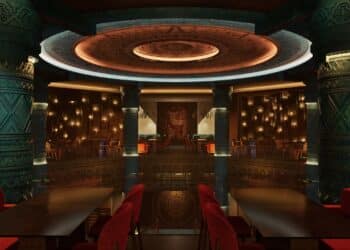Mat Green, head of research, UAE, CBR Middle East discusses capturing local markets to boost Egyptian trade, new hotel supply in Cairo and how retail growth could be the next big market whilst international visitors dwindle.
Egypt’s short to medium term economic outlook shows slowing GDP growth, with 2015/16 projections cut from 4.5% to 3.8% by the World Bank reflecting limited business activity, foreign exchange shortages and a declining tourism industry, according to the global property consulting firm, CBRE, as part of its Q4 2015 Cairo MarketView. ![Mat Green Head of Research UAE CBRE Middle East[2][1][1]](http://www.hotelnewsme.com/wp-content/uploads/2016/06/Mat-Green-Head-of-Research-UAE-CBRE-Middle-East211-340x520.jpg)
Retail market
Despite ongoing economic challenges, leading developers and investors from the GCC, among others, continue to show a tangible interest in the retail market. The total stock of regional and super regional shopping mall retail space in Cairo surpassed one million m² during 2015, with a 20% year on year growth rate as retail is viewed as a key growth sector, with significant future expansion potential, with demand driven by a large youth population – around 60% of the Egyptian population are under the age of 30. The emergence of a more affluent middle class and a growing acceptance of modern retail concepts are also key drivers behind this growth. With this in mind, an additional one million m² of space, doubling the current stock, is expected to completed over the next three years. Average retail space rents are currently around $1,400 per m² and these are forecasted to remain stable throughout 2016.
Residential market
The composition of Egypt’s population continues to be one of the principal contributors to the country’s potential for a thriving residential sector, with more than half of the population under the age of 25 years old. When combined with the recent increase in the number of marriages, demand has further strengthened. It is estimated that the gap between supply and demand in 2015 is a shortfall of approximately 125,000 units, with demand in the city across low to high income groups reaching 225,000 units. However, there is a heavy weighting towards housing requirements for those in the low income groups, with this segment comprising 51% of the total, while the high income requirement is much lower at just 9% of the total. Apartment rental rates of medium to high grade stock in the satellite city of New Cairo have experienced steady growth with a two-bedroom unit priced at $1,225 per month in late 2015, up by around 4.75% year-on-year. In comparison, average apartment rents offered in 6th of October City are significantly lower, with a typical variance of between -30% to -40% recorded during the period 2012 to 2015.
Hospitality market
The tourism sector in Egypt suffered once again in late 2015, as 2016 continues to be a turbulent year with a drop in tourist flows following recent security threats. November 2015 arrivals were down 38% year-on-year and were more than 60% lower than November 2010.
The Cairo market continues t be dominated by 5-star hotels, which comprises 69% of the total supply, with 40 properties currently in operation a future supply planned to be delivered this year, including: Westin Cairo Golf Resort and Spa; W Cairo; St. Regis and Steigenberger Hotel Tahrir Square.
New supply in Cairo will add over 900 rooms to the existing 15,000 rooms, which reflects a potential increase of 6% in total stock over the coming 12 months alone.
Despite the drop in tourist arrivals, the number of Egyptian nationals travelling within the country has in-fact grown. Egypt’s large population base includes more than five million higher income citizens who have spending capacity to purchase luxury goods and accommodation, this demographic group will be required to support the local hotel trade in the absence of international tourists.


































































